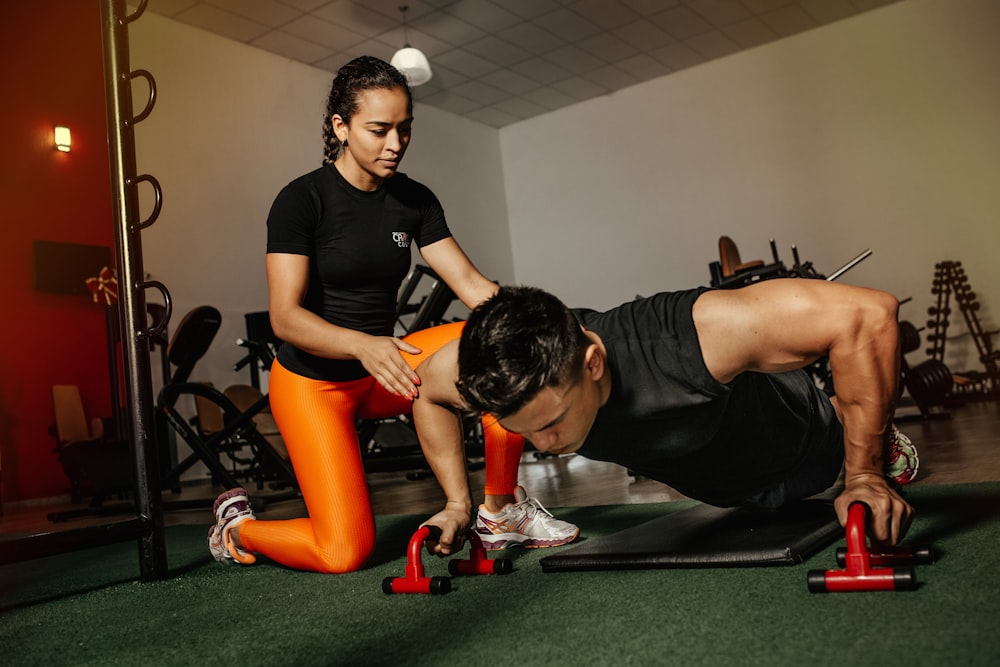目次
脳卒中症例に対する体幹トレーニングの効果は?
脳卒中症例が歩行や日常生活動作を獲得するためには体幹機能が重要となります.
脳卒中症例に対して理学療法士・作業療法士が体幹トレーニングを指導することは多いと思います.
今回は脳卒中症例に対する体幹トレーニングの効果を考えるうえで参考になる論文をご紹介させていただきます.

今回ご紹介する論文
Trunk Training Following Stroke
Liselot Thijs, Eline Voets, Stijn Denissen, Jan Mehrholz, Bernhard Elsner, Robin Lemmens and Geert Verheyden
Originally published28 Aug 2023https://doi.org/10.1161/STROKEAHA.123.043490Stroke. 2023;54:e427–e428
今回ご紹介する論文は2023年に掲載された論文です.
研究の目的
Trunk training literature suggests beneficial effects for improving motor and functional outcome after stroke but the summarized effect on independence in activities of daily living (ADL) is unclear. In this Cochrane review, we provided an updated overview on the effectiveness of trunk training on ADL compared with both nondose-matched (trials with more training duration in the experimental compared with the control intervention) and dose-matched control groups (trials with equal training duration in the experimental and control intervention).
体幹トレーニングに関する文献では,脳卒中後の運動機能や機能的転帰の改善に有益な効果があることが示唆されておりますが,日常生活動作(ADL)の自立に対する効果の要約は不明であります.
このコクランレビューでは,体幹トレーニングのADLに対する効果について,用量非一致群(対照群と比較して実験群のトレーニング期間が長い試験)および用量一致対照群(実験群と対照群のトレーニング期間が等しい試験)の両方で比較し,最新の概要を示すことを目的としております.
研究の方法
We searched the Cochrane Stroke Group Trials Register, CENTRAL, MEDLINE, Embase, and 5 other databases to October 25, 2021.
Cochrane Stroke Group Trials Register,CENTRAL,MEDLINE,Embase,その他5つのデータベースを2021年10月25日まで検索しております.
データ選択基準
We selected randomized controlled trials comparing trunk training versus nondose-matched or dose-matched control therapy including adults (18 years or older) with either ischemic or hemorrhagic stroke. Primary outcome measure was ADL and secondary outcomes included trunk function, arm-hand function and activity, standing balance, leg function, walking ability, and quality of life.
虚血性脳卒中または出血性脳卒中の成人(18歳以上)を対象とし,体幹トレーニングと非投与量一致または投与量一致の対照療法を比較した無作為化比較試験を選択しております.
主要評価項目はADLで副次的評価項目は体幹機能,上肢と手の機能と活動,立位バランス,下肢機能,歩行能力,QOLとしております.
研究の結果
In total, we evaluated 17191 search results, and we included 68 trials with 2585 participants. For nondose-matched trials, we found that trunk training improved ADL (Figure [A]; standardized mean difference=0.96 [95% CI, 0.69–1.24]; P<0.001; 5 trials, 283 participants, very low-certainty evidence). There was also a positive effect in favor of training for trunk function (14 trials, 466 participants), arm-hand function (2 trials, 74 participants), arm-hand activity (1 trial, 30 participants), standing balance (11 trials, 410 participants), leg function (1 trial, 64 participants), walking ability (11 trials, 383 participants), and quality of life (2 trials, 108 participants).
合計で17191件の検索結果を評価し,2585例を対象としております.
参加した68件の試験を対象としております.
用量が一致しない試験では,体幹トレーニングがADLを改善することが明らかとなりました(標準化平均差=0.96[95%CI、0.69-1.24];P<0.001;5試験、283人、非常に信頼性の低い証拠).
また体幹機能(14試験、466人),上肢・手指機能(2試験、74人),上肢・手指活動(1試験、30人),立位バランス(11試験、410人),下肢機能(1試験、64人),歩行能力(11試験、383人),QOL(2試験、108人)においてもトレーニングに有利な効果が認められました.
When pooling dose-matched trials, we found no effect of trunk training on ADL (Figure [B]; standardized mean difference=0.10 [95% CI, −0.17 to 0.37]; P=0.48; 9 trials; 229 participants; very low-certainty evidence). Trunk training ameliorated trunk function (36 trials, 1217 participants), standing balance (22 trials, 917 participants), leg function (4 trials, 254 participants), walking ability (19 trials, 535 participants), and quality of life (2 trials, 111 participants).
用量が一致した試験をプールしたところ,ADLに対する体幹トレーニングの効果は認められませんでした(標準化平均差=0.10[95%CI、-0.17~0.37],P=0.48,9試験,229例,非常に確実性の低い証拠).
体幹トレーニングは体幹機能(36試験、1217人),立位バランス(22試験、917人),下肢機能(4試験、254人),歩行能力(19試験、535人),QOL(2試験、111人)を改善することが明らかとなりました.
研究の考察
This review1 suggests that trunk training improves basic ADL, trunk function, standing balance, walking ability, upper and lower limb function, and quality of life. Notably for the primary outcome, we found a beneficial effect in nondose-matched trials which was absent in dose-matched trials. The role of nondose versus dose-matched in the design of clinical trials is an important finding, which deserves further study and consideration in systematic reviews and meta-analyses. Overall, the certainty of evidence was low to very low, mainly due to methodological limitations of studies and small sample sizes. This field would certainly benefit from a high-quality phase III randomized controlled trial with ADL as primary outcome measure, including a follow-up measurement and reporting adverse events. Several trunk training approaches were identified. Trunk training on an unstable surface provided positive outcomes for ADL, trunk function, standing balance, and walking ability. The results of this review support the regular inclusion of trunk training as part of rehabilitation in clinical practice when training people with stroke in both the sub-acute and chronic phase after stroke.
体幹トレーニングが基本的なADL,体幹機能,立位バランス,歩行能力,上肢・下肢機能,QOLを改善することが示唆されました.
特に主要アウトカムについては,用量が一致しない試験では有益な効果が認められましたが,用量が一致する試験では認められませんでした.
臨床試験のデザインにおける非投与量と投与量一致の役割は重要な知見であり,システマティックレビューやメタアナリシスにおいてさらなる研究や検討が必要であります.
全体としてエビデンスの確実性は低いか非常に低いものでありましたが,これは主に研究の方法論的限界とサンプルサイズが小さいことによると考えられます.
この分野ではADLを主要評価項目とし,追跡調査や有害事象の報告を含む,質の高い第III相ランダム化比較試験が確実に有益だと考えられます.
不安定な路面での体幹トレーニングはADL,体幹機能,立位バランス,歩行能力に良好な結果をもたらしました.
このレビューの結果は脳卒中後の亜急性期と慢性期の両方において,脳卒中患者のリハビリテーションの一環として体幹トレーニングを定期的に実施することを支持するものであります.
これは非常に興味深い結果ですね.
用量を一致させると効果は確認されなかったという結果ですので,他のトレーニングに対する優位性というのは確認できなかったという結果ですね.
結局のところ症例に応じたトレーニングが重要なわけですが,今後も体幹トレーニングに対する報告が俟たれますね.






